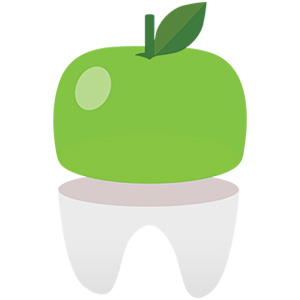
If you touch your face right in front of your ear while opening and closing your jaw, you’ll feel your temporomandibular joint (TMJ) at work. It might seem pretty straightforward but it’s a surprisingly complex joint. When the going is good, you can let out a yawn or take a huge bite of that burger without thinking twice. When something’s off, as is it is when you’re suffering from a temporomandibular disorder (TMD), it’s a whole another story and that joint and its cronies can cause serious pain.
As a Certified Specialist in Orthodontics, Dr. Khanna doesn’t just make smiles look amazing, he also deals with the bite as a whole, the jaw included, giving him a keen understanding of its mechanics. You know what else he has an understanding of? Just how frustrating it can be to come up short when searching for relief from TMJ pain. Well, the good news is, the vast majority of the time, TMD / TMJ problems can be treated conservatively and by learning what’s going on when TMJ pain problems crop up, you can even take action at home to minimize the discomfort.
What is TMD/TMJ?
The temporomandibular joint (TMJ) is a joint that connects the lower jaw (mandible) to the temporal bone on either side of the face – yup, we have two of them. It’s capable of both hinge and sliding motions, allowing us to open and close the jaw and shift it side to side and forward and back to do things like chew, yawn and talk. You also have a whole system of interrelated components, including condyles – the round ends of the jaw – that slide up and down the temporal bone’s joint socket, a disc that absorbs shock and ensures movement is smooth, cartilage that covers the bones that work with the joint and facial muscles that control its movement.
While people often refer to problems with the joint as TMJ, that’s the name for the joint itself and TMJ pain is actually a TMJ disorder and part of the larger category of temporomandibular disorders (TMD). TMD involves the TMJ or its associated structures, such as the discs, muscles, cartilage and ligaments we mentioned. The most common TMD symptoms include:
- Popping sounds, clicking noises or a grating sensation when you open and close your mouth (jaw noises on their own don’t indicate TMD and rarely require treatment)
- Pain and tenderness in the jaw, face, neck or shoulders
- Jaws that get stuck or locked in an open or closed position
- A decrease in jaw mobility leading to trouble opening the mouth fully
- A change in your bite (how the top and bottom teeth fit together)
- Muscle spasms in the area of the jaw
- Facial swelling
- Frequent headaches, earaches, pressure and pain behind the eyes and even backaches
What Causes Temporomandibular Joint Disorders?
TMJ problems’ frequent discomfort is mild and fleeting and goes away on its own or with minimal intervention. However, it can be chronic, severe and debilitating. Unfortunately, there isn’t one universal cause and it can result from a variety of different things or a combination of factors. Symptoms can also appear spontaneously with no obvious source, making pinpointing the root problem really difficult. Generally, TMD is thought to be caused by:
- Injury to the jaw or joint. Trauma can be direct, such as getting hit in the face or falling and striking the chin, or indirect like with whiplash or another injury to the muscles in the neck and head
- Arthritis in the joint, which damages the joint’s cartilage
- Stress if it leads you to tighten the muscles in your face or clench your jaw
- The disc eroding or getting displaced
- Chronic bruxism (teeth grinding), as it puts a lot of pressure on the joint and muscles
- A bite imbalance
- Female hormones are being explored by researchers as a possibility since TMD is more common in women
Who is at Risk for Developing TMJ Pain?
TMJ pain can strike anyone of any age and studies estimate that TMD affects between 5 and 12% of the population and is the number one cause of facial pain. However, it is twice as common in women, particularly those in their child-bearing years and those using oral contraceptives or supplemental estrogen. It’s also seen more frequently in younger people aged 20 to 40. There are other conditions and risk factors associated with TMD.
While not necessarily the cause, studies have shown a strong correlation between TMD and chronic pain disorders like fibromyalgia and conditions such as chronic fatigue syndrome, connective tissue diseases, chronic pelvic pain and immune system deficiencies. The conditions have overlapping symptoms, which is why some scientists hypothesize that they might have similar underlying mechanisms.
How are Temporomandibular Joint Disorders Diagnosed?
Just like there isn’t an agreed upon cause of TMD, there isn’t a standard test that’s done to diagnose the disorder. Your orthodontist is a good place to start when you experience problems, after you’ve ruled out issues that have similar symptoms like an ear infection and sinus infection.
When our Brooklyn TMJ disorder patients come in for a consultation at Fresh Orthodontics, we chat with them about their symptoms, take a detailed medical and dental history, examine their mouth, head and neck, listen to the jaw as it moves, analyze their bite, palpate the area to check for inflammation and often take x-rays as well. Sometimes, other tests like an MRI or CT scan are recommended.
Having Jaw Pain? Book a Free Consultation
TMD Treatment
Treatment of TMJ disorders depends on their cause. Since they’re most often temporary, if pain is mild, try home TMD treatments first. More severe or chronic cases will necessitate a visit to the doctor or orthodontist but you can minimize the pain until your appointment with home remedies too. Here are some tried and true techniques:
- Eat soft foods until your pain subsides (it’s a good excuse for ice cream). Mashed potatoes, smoothies, milkshakes, steamed veggies and soup are all safe options.
- Take a mild, over-the-counter, non-steroidal anti-inflammatory drug (NSAID), like Ibuprofen, according to the instructions. This will relieve inflammation and pain in the short-term. Your doctor may also prescribe muscle relaxants, stronger NSAIDs or certain anti-depressants, if necessary. Keep in mind, these are temporary solutions.
- Don’t chew gum until you’re feeling better.
- Apply ice packs to the sore area.
- For a spasm or locked jaw, try your best to relax. Use warm, moist heat and attempt to wiggle the jaw as much as you can. If it doesn’t get better and the jaw remains locked, seek medical attention.
- If you’re under stress, do some deep breathing and relaxation techniques to stop clenching. Try this: sit in a comfortable position with your back straight, close your eyes and keep your teeth slightly parted to relax your jaw. Inhale slowly and fully through your nose to a count of four, hold the breath for a count of four and then exhale slowly and fully to a count of eight, contracting the abdomen as you release all of the air. You may want to imagine directing your breath to your jaw as you do this. You can also try the breathing to a different count depending on your natural breathing rhythms.
- When you’re no longer in pain, doing gentle TMJ stretching and strengthening exercises can help with your range of motion and keep symptoms from returning.
Research has indicated that when medical intervention is necessary for TMD, a conservative approach is effective. In fact, except in rare cases or when the condition is extremely severe, surgery hasn’t been shown to be all that helpful and should only be considered as a last resort. Here are some ways your orthodontist or doctor may treat your TMJ disorder:
- Physical therapy – Physical therapy can be really great for decreasing swelling and discomfort, warding off future occurrences and increasing mobility. We sometimes refer patients to a physical therapist who will show them strengthening and stretching exercises for the jaw and facial muscles. They may also use moist heat and ice, myofascial release, massage techniques and ultrasound, as well as work on tongue positioning and posture.
- Custom oral appliances – Custom nightguards or oral splints created by an orthodontist can be an excellent way to get relief without medication. Nightguards are mouthguards that are worn at night and they protect your teeth from the effects of sleep bruxism (teeth grinding). By softening the impact, they can help prevent damage and compression of the TMJ. Splints are appliances that keep the jaw in a more comfortable, stable position, relaxing the muscles, alleviating pressure on the TMJ and thus decreasing pain. Depending on how bad the TMD is, you might have to wear it full-time for a specified period before transitioning to night use. It doesn’t permanently alter the jaw position, which is why it’s especially good during the diagnostic period.
- Counseling – If your TMJ disorder problems are stress-related and relaxation techniques haven’t been effective, counseling can be beneficial. A professional can help you identify your stressors, develop coping mechanisms and show you how to be more mindful of clenching.
- Orthodontic treatment – If TMD is due to malocclusion and an imbalance in bite forces, braces or Invisalign can align the teeth and jaws, which repositions the TMJ and surrounding structures. We don’t automatically turn to orthodontic treatment, however, because, first, we want to make sure the prescribed movements will help with TMD and not make positioning worse.
- Injections – Some patients respond to injections of a corticosteroid into the joint to reduce inflammation. Trigger point injections are also used. Trigger points are areas of spasm in the skeletal muscle that cause radiating pain to the surrounding body parts. When TMD involves muscle spasms, the doctor delivers an injection directly into the trigger point to release it. The injection could contain an anesthetic, corticosteroid or even just be a needle alone. Lastly, another new approach to treating TMJ pain problems is injecting the area with Botox® (botulinum toxin type A). It’s not currently approved by the FDA for this use but it is sometimes used off-label. Botox is injected into the muscle to temporarily freeze it and prevent it from contracting.
- Alternative medicine – In addition to standard Western medicine, complimentary medicine may be a way to manage the chronic pain associated with TMJ disorders. Some people swear by acupuncture and when done by a licensed professional, it’s safe. Biofeedback has also been gaining popularity. With this technique, a therapist typically uses electrical sensors to monitor muscle tightness, so you know when clenching and tightening are happening. Once you can identify the internal cues, you can learn to relax and lessen pain.
- Surgery – If all else fails and pain is debilitating and chronic, surgery could be recommended. There are several different kinds of surgery. With arthroscopic surgery, a small, thin tube is placed in the joint area through a small incision. This is less invasive than other types of surgery and carries fewer risks, however, it also has some limitations. Open-joint surgery is the most extreme and you and your doctor should weigh the pros and cons carefully. In this procedure, the joint is repaired or replaced. Modified condylotomy is another surgical procedure. It involves surgery on the jaw bone itself and not the joint, which can indirectly help with TMJ pain problems and prevent locking.
Preventing TMJ Disorders
While there’s no way to prevent TMJ disorders entirely since some of the causes are out of your control, there are things you can do to decrease the likelihood of it occurring or becoming chronic. Here are some ways to keep your jaw in top-notch condition:
- Make sure your face is relaxed by keeping your teeth slightly apart with your lips closed (unless you’re chewing, obviously) and resting your tongue on the roof of your mouth as opposed to between your teeth.
- Try not to open your mouth to its full extension, even when rocking out and singing along to your favorite song or yawning.
- Chewing on pens, your fingernails and other objects makes the jaw tense. Break the habit.
- If you know you grind your teeth, visit your orthodontist and ask about a nightguard.
- If you’re prone to jaw pain, cut food into bite-size pieces instead of opening wide to eat it.
- Don’t sit with your chin resting on your hand (à la The Thinker) when you’re lost in thought or just hanging out.
- When talking on the phone, try to avoid holding it between your jaw and your shoulder.
- Proper posture can actually work wonders for keeping your joints in the correct position and reducing jaw strain and clenching. Sit up tall with your shoulders back and down and your ears over your shoulders.
- Eat a healthy diet and make sure to get adequate amounts of essential vitamins and minerals, as well as plenty of anti-inflammatory foods, such as leafy greens, nuts, fatty fish, olive oil, berries, cherries, oranges and tomatoes.
Don’t let TMJ pain problems hold you back. If self-care techniques aren’t working for you and you’re looking for help with your TMD in Brooklyn, schedule a consultation at Fresh Orthodontics. Dr. Khanna will do a thorough exam and come up with a comprehensive treatment plan so you can get back to living your life to the fullest.













